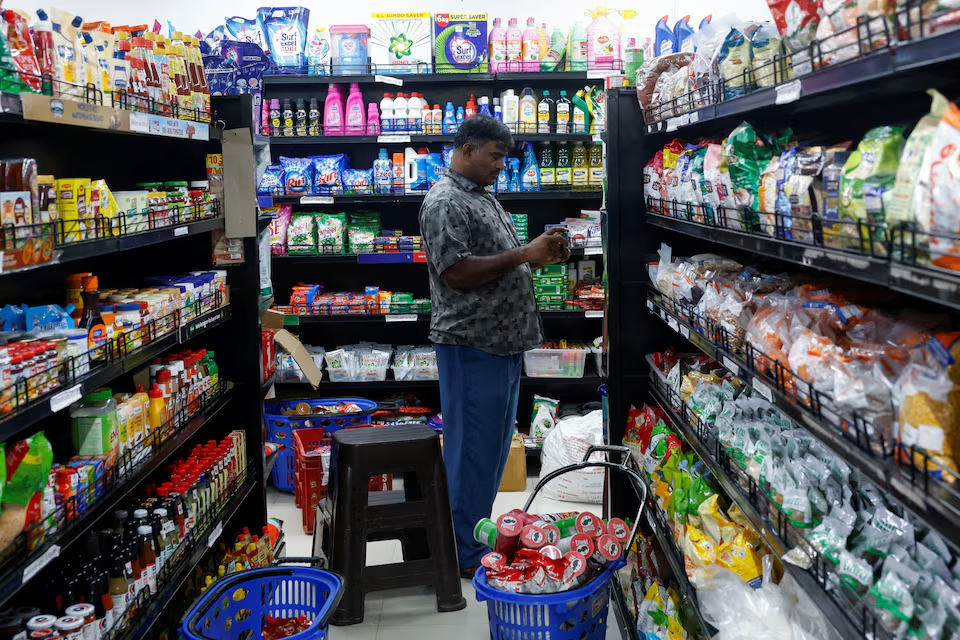
NEW DELHI – India’s retail inflation dropped to an unprecedented 0.25% in October 2025, the lowest level on record, as food prices plummeted and government tax cuts took full effect. The sharp decline has bolstered expectations that the Reserve Bank of India (RBI) will lower interest rates in its upcoming December policy review, providing additional support to a slowing economy.
Record-Low Inflation Driven by Cheaper Food and Tax Cuts
According to official data, food prices fell 5.02% year-on-year in October, marking the steepest decline ever recorded. The fall followed a 2.33% drop in September and came after the government reduced Goods and Services Tax (GST) on hundreds of essential items—including dairy, grains, and personal care products—to stimulate consumer demand.
Inflation for September was revised slightly lower to 1.44%, keeping price growth well below the RBI’s 2–6% tolerance band for a second consecutive month.
“We expect FY26 Consumer Price Index (CPI) inflation to remain below 2%, paving the way for a December 2025 rate cut by the RBI, with another 25-basis-point cut likely in February 2026,” said Garima Kapoor, economist at Elara Securities.
The government attributed the dramatic drop in inflation to the full impact of consumer tax cuts, alongside a moderation in global commodity prices and improved food supply conditions.
RBI Faces Growing Pressure to Cut Rates
With inflation at a historic low and growth expected to slow in the second half of FY2025–26, analysts believe the central bank now has ample room to reduce the repo rate to stimulate spending and investment.
“To prevent the economy from slipping into sluggish growth, the RBI may opt for a 25–50 basis-point rate cut in December,” said Devendra Pant, chief economist at India Ratings and Research. He added that overall retail inflation for the current fiscal year is expected to average around 2.5%, giving policymakers flexibility to continue easing.
So far in 2025, the RBI has already delivered 100 basis points of rate cuts, signaling a clear pivot toward growth support amid global trade disruptions and moderating domestic demand.
Food Inflation at Multi-Year Low; Vegetables Lead Decline
The latest data shows broad-based declines across major food categories:
- Vegetable prices dropped 27.57% in October, following a 21.38% fall the previous month.
- Pulses prices fell 16.2%, extending a steep 15.3% decline in September.
- Cereal inflation eased sharply to 0.92%, down from 2.1% a month earlier.
These trends reflect both a strong harvest season and targeted policy interventions, such as export curbs on staples and tax relief on essential goods.
Core Inflation Remains Sticky Due to Gold Prices
While headline inflation eased dramatically, core inflation—which excludes volatile food and energy prices—remained elevated at 4.4%, only slightly down from 4.5% in September. Economists attribute this to the surge in domestic gold prices, which rose nearly 5% in October and fed into the miscellaneous goods and services category.
“The continued rise in gold inflation has offset some of the benefits from GST cuts,” noted Shivaan Tandon, Asia Economist at Capital Economics. “It’s a reminder that while headline inflation has collapsed, price pressures in discretionary sectors remain.”
Economic Slowdown and Global Headwinds
India’s economy grew 7.8% in the April–June quarter but is expected to lose momentum in the latter half of the year due to weaker exports and external shocks. The slowdown has been exacerbated by U.S. tariffs of up to 50% on Indian goods, which have disrupted key export sectors such as textiles and electronics.
However, falling domestic inflation, easing interest rates, and robust public investment are expected to cushion the impact. The Reserve Bank of India’s rate-setting panel is scheduled to meet from December 3–5, with markets widely anticipating a rate cut between 25 and 50 basis points.
RBI Governor Sanjay Malhotra hinted during the October policy review that the current macroeconomic environment offers “policy space for further supporting growth”, reinforcing expectations for additional easing.
Outlook: Inflation Expected to Stay Below 2% in FY2026
Economists surveyed by Reuters predict that inflation will remain well below 2% through the first half of FY2026, giving the RBI room for another round of rate cuts early next year. Core inflation, however, may stay sticky due to elevated gold and service sector prices.
Overall, the combination of soft inflation, fiscal stimulus, and accommodative monetary policy positions India for a period of lower borrowing costs and renewed domestic consumption—though external risks, such as global trade tensions and commodity volatility, remain key uncertainties.


Leave a Reply